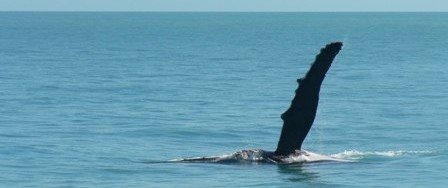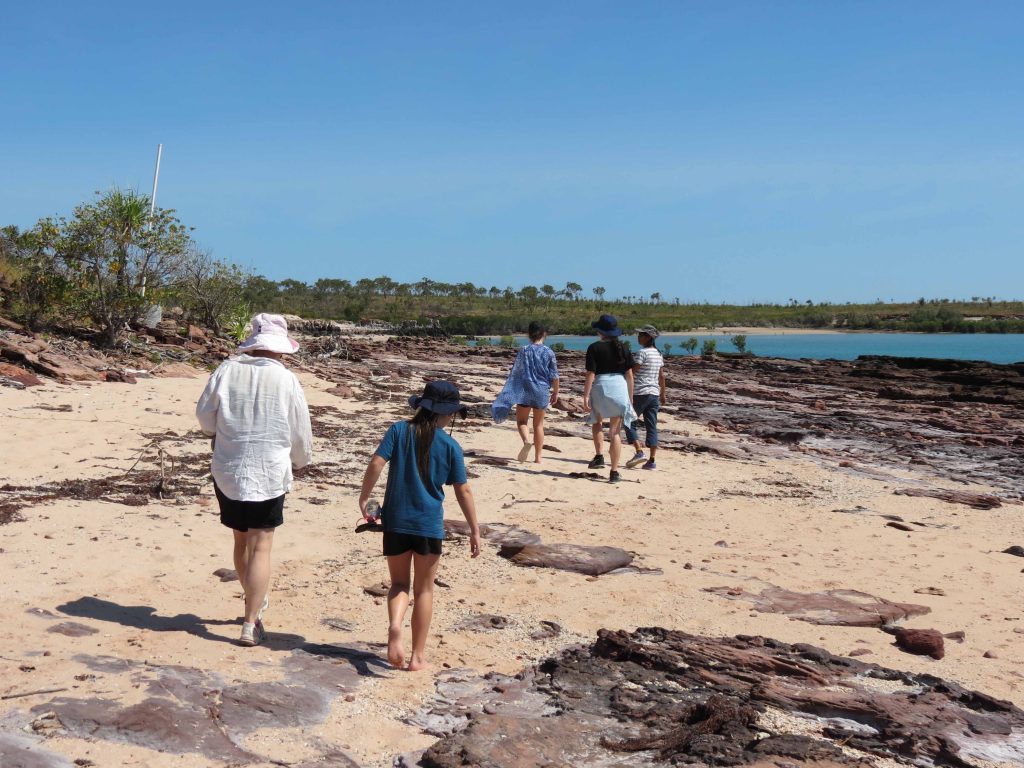Old friends and new projects – Another big year as we move forward
This year has been a big one for the Arraluli clan, the sanctuary area, and our friends and family.
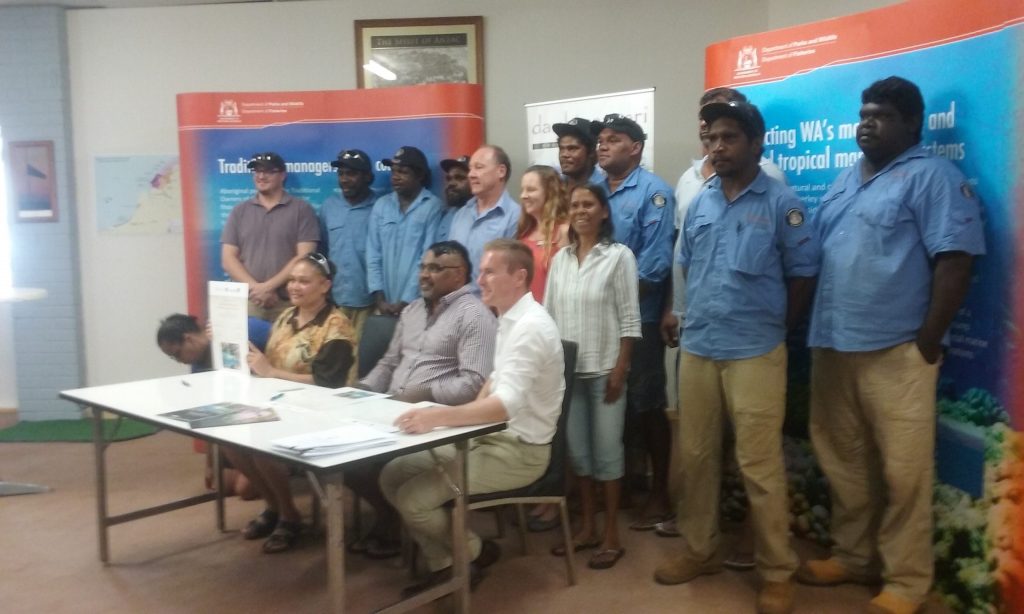
Isobel at the signing with members of Dambimangari Aboriginal Corporation and rangers. Isobel originally called for a marine reserve back in 2001.
To cap the year off, Isobel attended the final signing of the Lalang-Garram Marine Park.
This has culminated years of negotiations by Isobel with her fellow countrymen and the State Government.
“My clan areas are a part of the north parks and this is a big step for me and my other tribe family members for their areas, but we are following what our old people set up for us a long way back, and how they wanted us to go in this time.”
“I see this park as a respect for ourselves and the country. We are trusting as we move forward. The Parks and Wildlife people have said they really want to support us running it our way, and that’s what we have been wanting, what we have been working for.”
“We have talked up as a clan for our voice on the whales and the reefs, and as the park grows we will be working with the joint management board to further that, and incorporate our management plan based on the traditional system for managing this country – the wunan. This is a new wurnan, that is what our old people taught us. It is wurnan including armara (non-tribe).”
“I am happy that other areas are part of this and that there is a big picture park, and I am happy the park recognises from which area we all come from to make up the bigger picture of the areas on the table.
Isobel at the signing with members of Dambimangari Aboriginal Corporation and rangers. Isobel originally called for a marine reserve back in 2001.
“If you want to go to the south with other mob at Horizontal Falls, or Cone bay, you talk to them how they want you to go there. If you want to come to Lulim areas or Jowjabai,
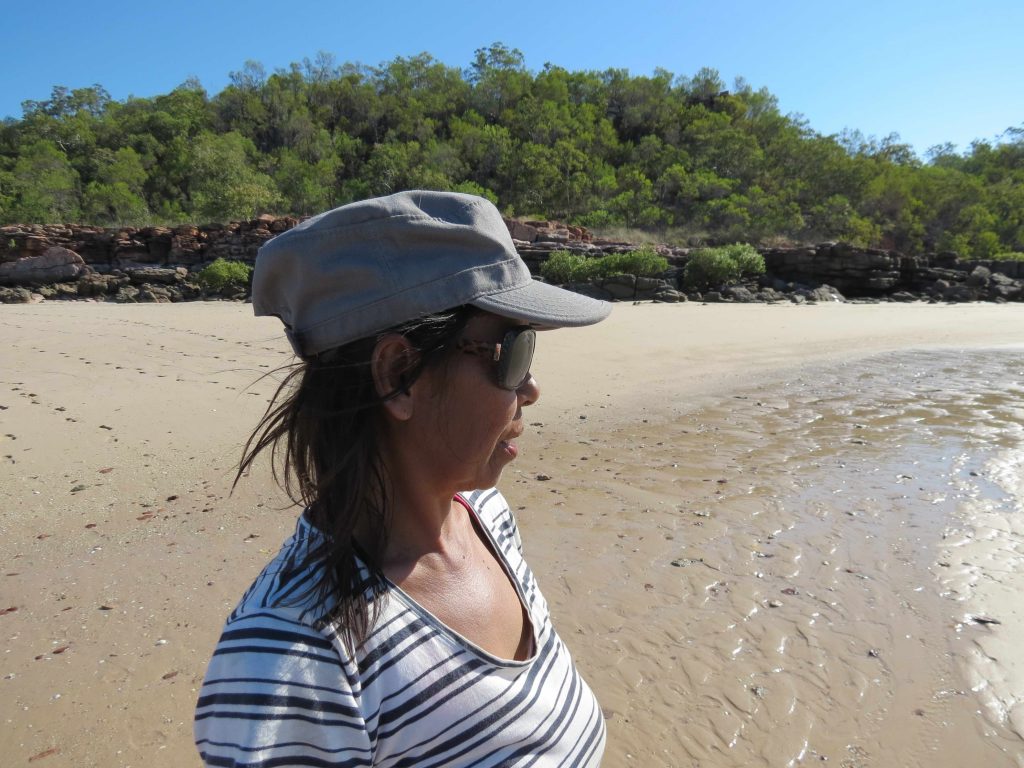
Isobel at her family beach at Lung-a-wurro, in Lulim, looking out on the whale dreaming line at Bibbi-ai.
you come and see us. This is how we are working. Supporting each other while at the same time making sure that our clan areas are looked after they way that we need to look after them.
“We look forward to bringing out more of the history of my people in this area as we open it up to the world. We are working on the new wurnan that the past of our elders put together for us
to work in this time, to share our culture and our country. When we follow wurnan everything works out, when we don’t things go wrong – and some of the biggest stories of our culture is about this.”
Isobel said the AWSP will continue to exist as a project in its own right into the future. “I still have a lot to go until we are happy that those areas with very high values are protected by all this paperwork.”
“We also want to start to bring friends of the Arraluli Whale Sanctuary Project out to country to experience firsthand the environment and its diversity and continue our work as a clan mapping this.”
As we balance reflection on our past, and looking forward to our future, the clan and everyone at the AWSP note with particular sadness the loss of Dr Steve Blake to our world. Dr Steve had been a great associate and friend of the sanctuary project. Steve remains the only scientist to have contacted and worked closely with us in this time and paid respect to the Aboriginal point of view during the announcement of the ‘discovery’ of the whale sanctuary.
“He understood we were still living as a people and still looking after in our own ways the environment and the marine life and animals.”
To his credit as a person and as a scientist, Steve immediately warmed to our cultural view and saw it as subject to social and scientific ethics, which bought him into some conflict of viewpoint with others in his academic world at this time.
Isobel at her family beach at Lung-a-wurro, in Lulim, looking out on the whale dreaming line at Bibbi-ai.
We will miss the many hours of conversation with Steve, and his contributions to marine science in our area. It was with much delight that Steve’s family, wife Janine and daughters Bianca, Zoe and Lucy, made the pilgrimage out to Lunga’wurro as per Steve’s wishes. It was over the songline of Lunga’wurro that Steve first bonded with our clan, and he relayed to us his profound scientific and personal experiences in and around this area, as a human and as a marine biologist. We both got a lot out of the work that was managed to be completed, and we thank Steve and his family immensely for his contribution to this area being recognised as a valuable and rare tropical marine ecosystem. We are lucky to have the media artefacts that Steve was such a big part putting together,
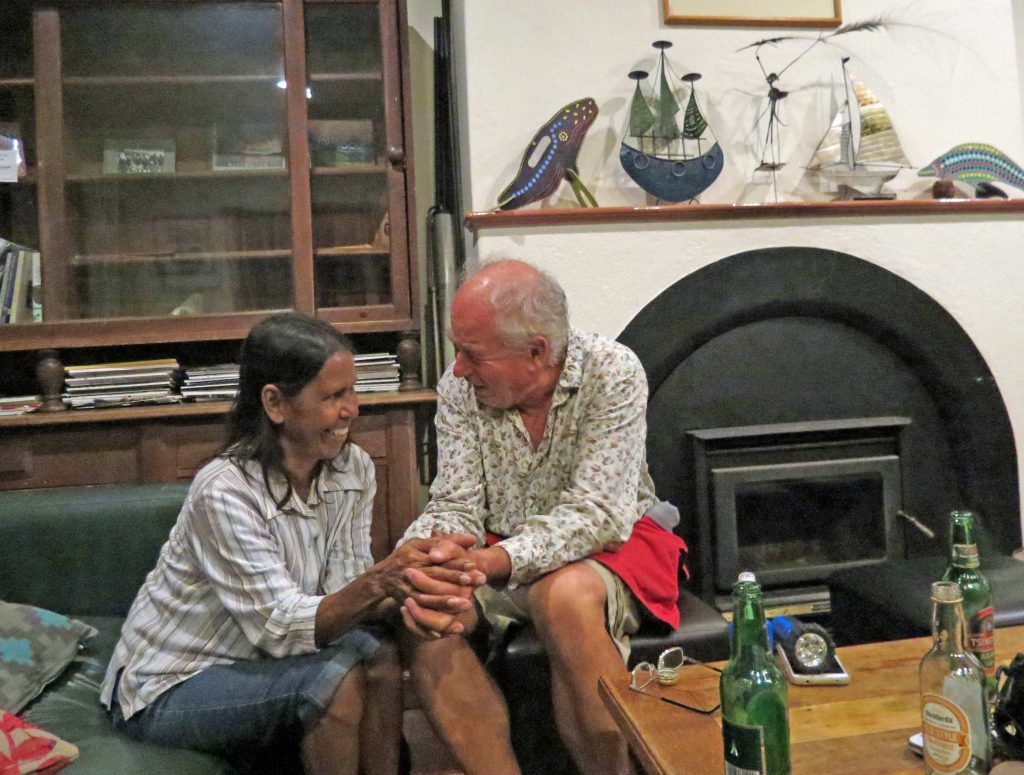
Isobel meets Michael Edols for the first time since she was a child. Michael made two movies in Lulim country in the 70s and 80s
that are the only pieces of reporting from the time that respected the true Aboriginal history of the area, the heart of the sanctuary, and it was fabulous to have his family in country to see how beautiful and significant the place that their dad fell in love with is. We will continue the work that Steve helped start with us.
We caught up with filmmaker Michael Edols this year.
“Michael’s series of films in the 1970s and 80s are films that feature Arraluli clan country, and my family including my mother in the movie When The Snake Bites The Sun,” Isobel said.
In 2015 a painting of Isobel’s hand on tree bark filmed during the 1975 movie Floating…like wind blow ‘em about went on sale at auction in London for thousands of pounds.
Isobel enjoyed Michael recalling the genesis of his films he made with her elders, and shared her own recollections from those times and the making of the movies.
“It was good to sit down with Michael Edols and talk about when those movies were made with my old people. I was there as a young child when this was happening.
“Lalai Dreamtime and When The Snake Bites The Sun both use my mum’s country for filming and culture stories.”
“When the Snake Bites the Sun is about taking my mum back to country to complete
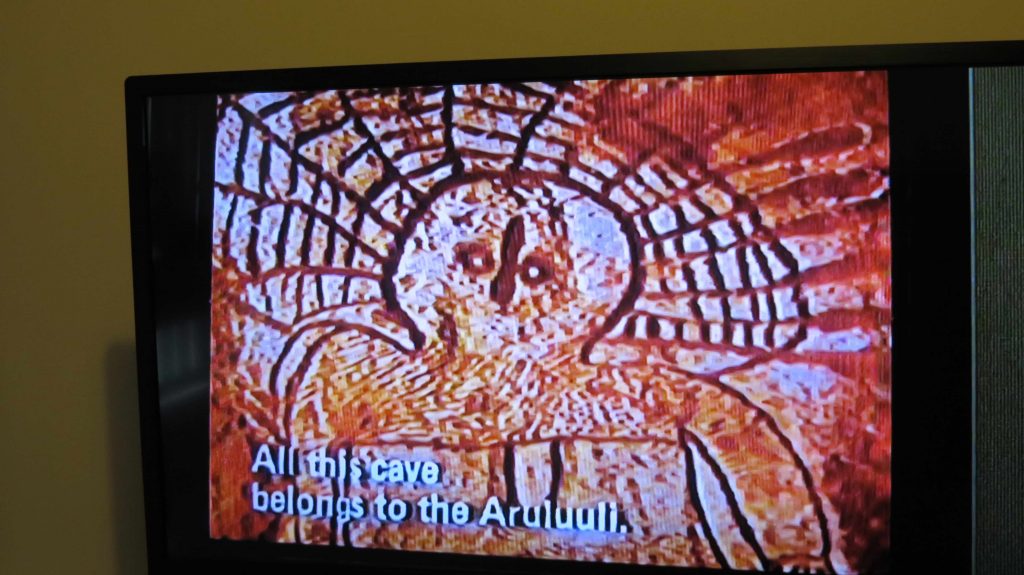
Still from the movie Lalai Dreamtime of the Wandjina Namaralee as it appears in the Arr’a’luli (Art’arrda’lu’li’ee) clan burial chamber in Lulim.
a ceremony to clear up
the first movie, which had no-one from my mum’s
clan in but filmed the caves and places of my grandfathers. These are very sacred places and are burial places for my clan and for the Wandjina too.”
“They show a bit of how my people lived here for too many years, and also where our peoples are now, which Michael was
telling us about these discussions with our old people, talking that I remember as a young girl.
“This is my family so it was very special to spend time with someone like him who worked with them back then on these movies.
“They were smart people and knew what they were doing making these movies for us children to live in this time.”
We look forward to continuing the friendship we established with Michael and his wife Marion and thank the lovely staff and locals at Ku-ring-gai National Park who we met during our visit to NSW.
